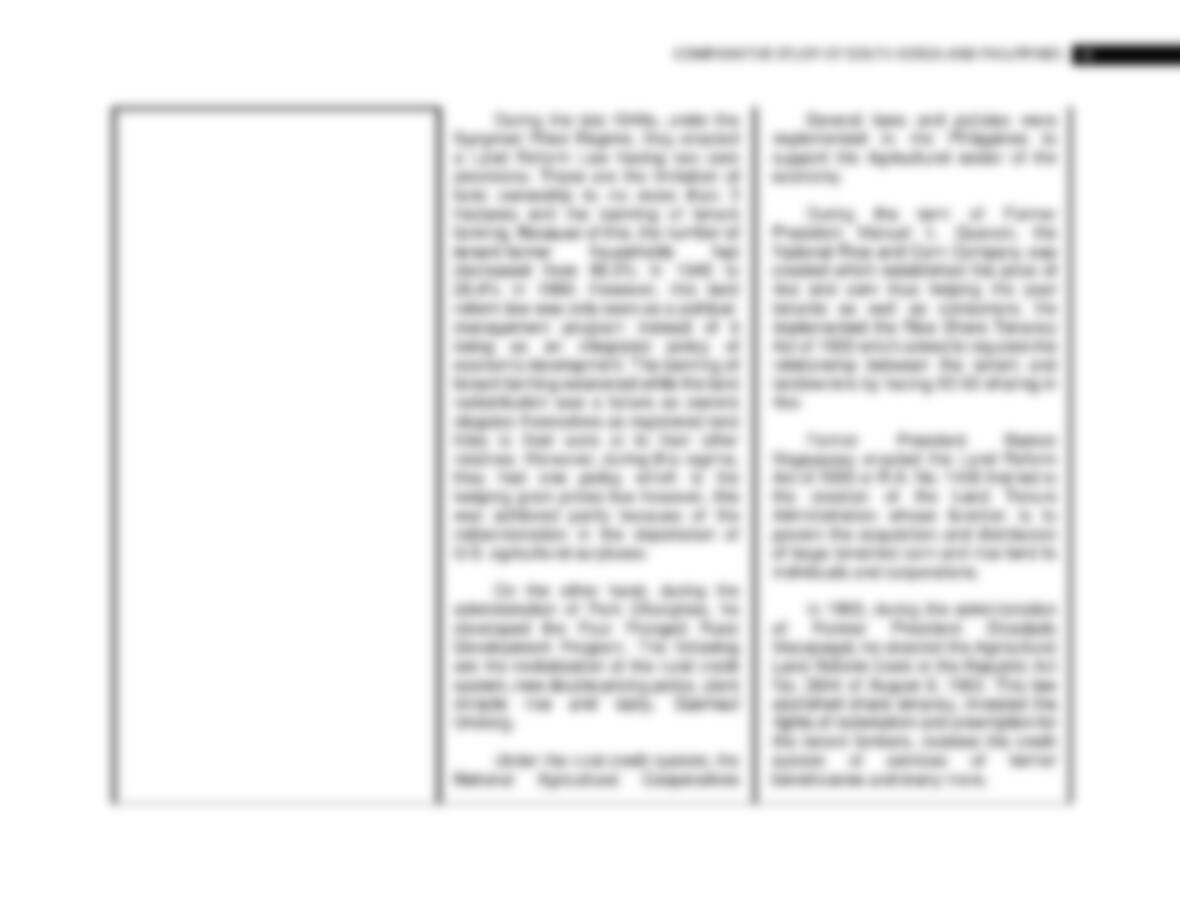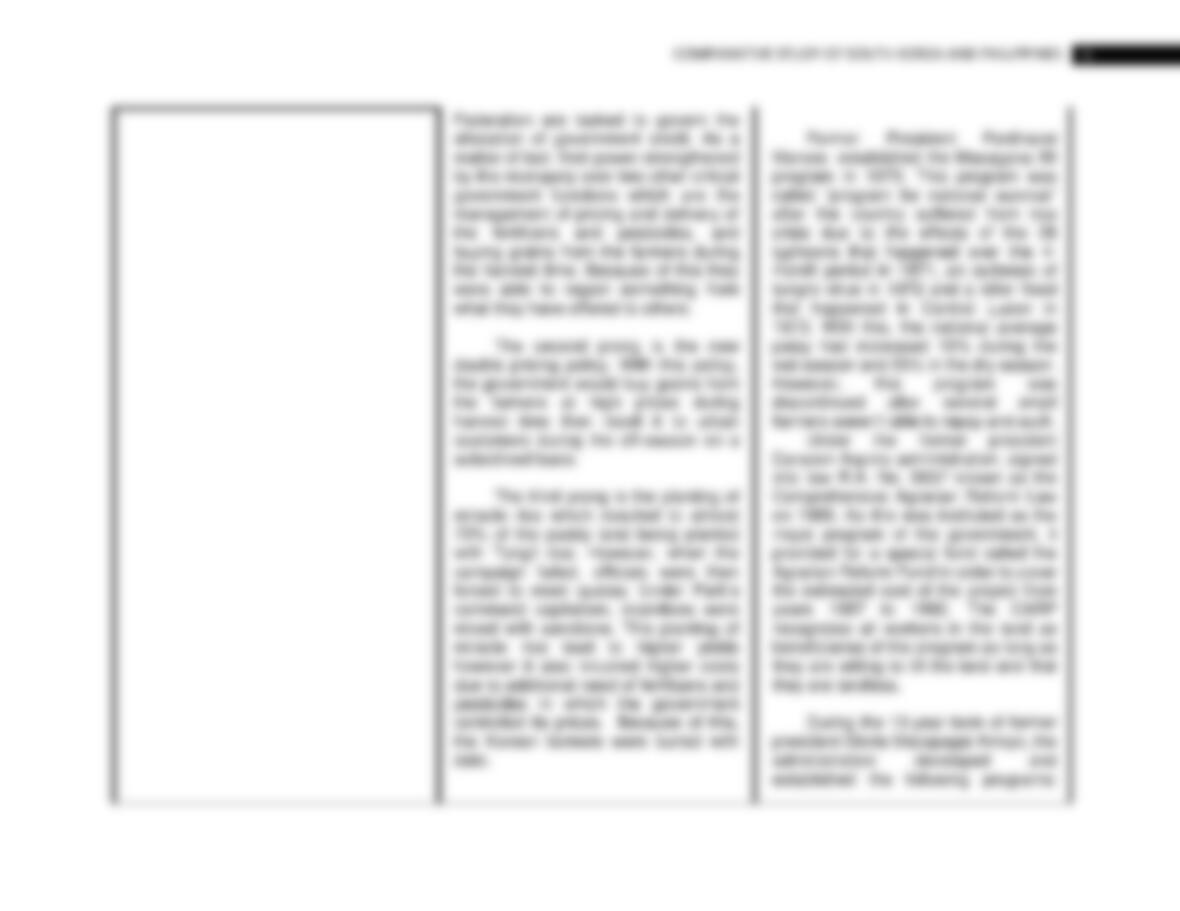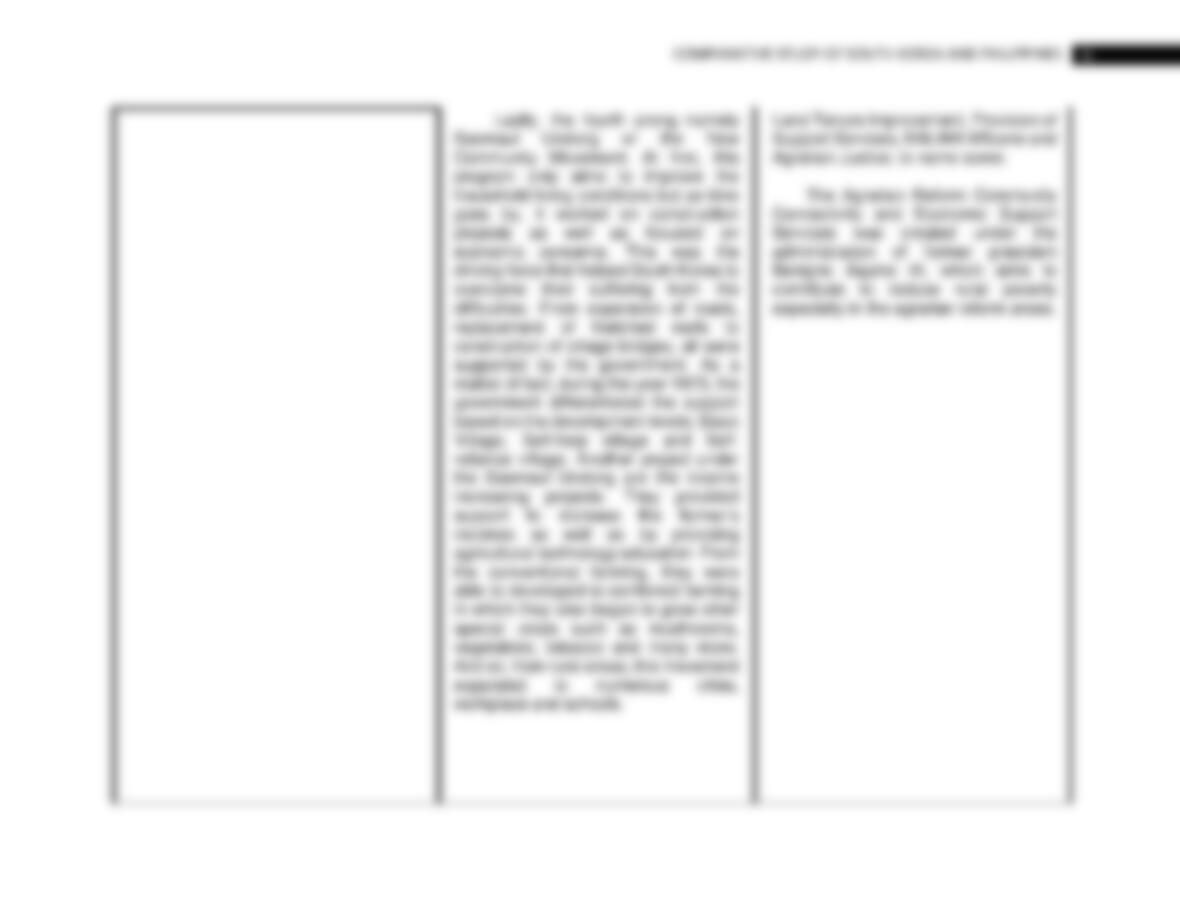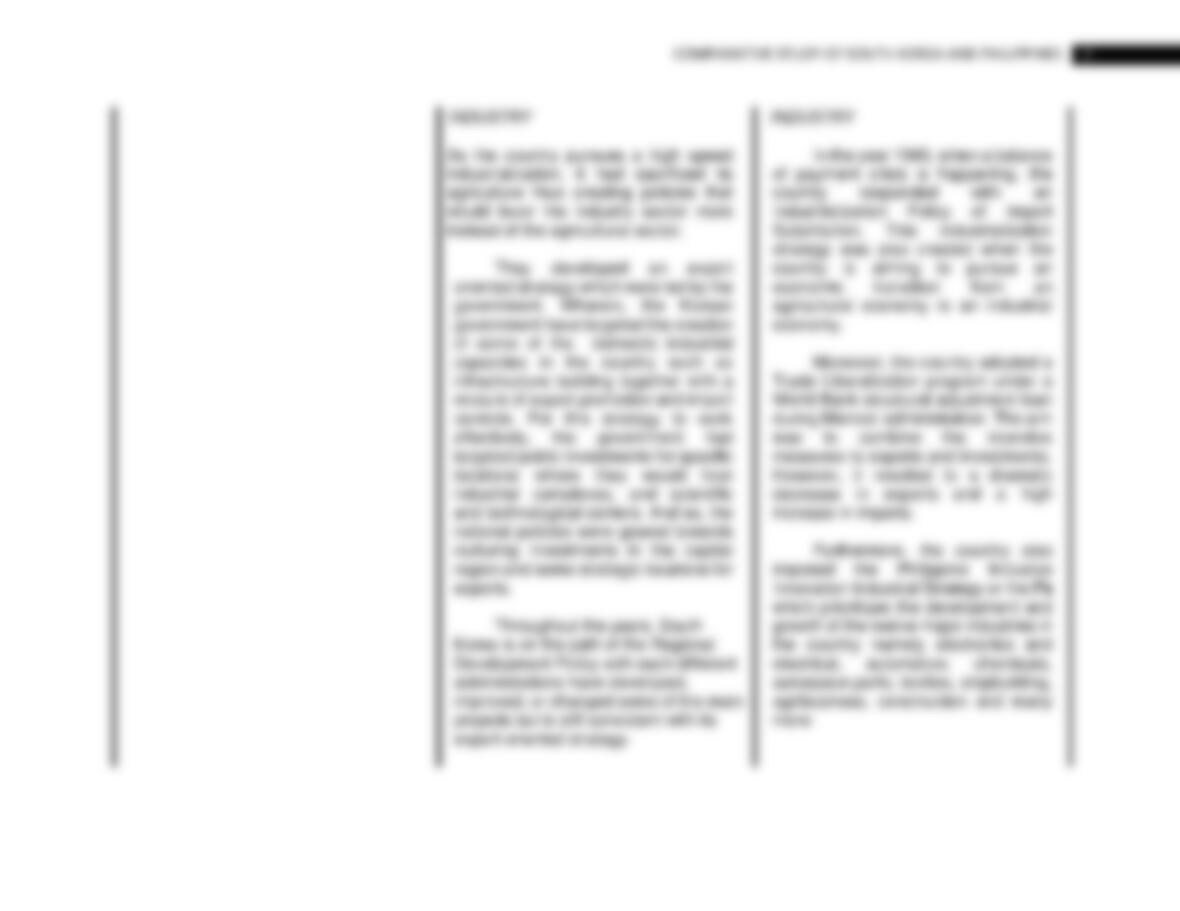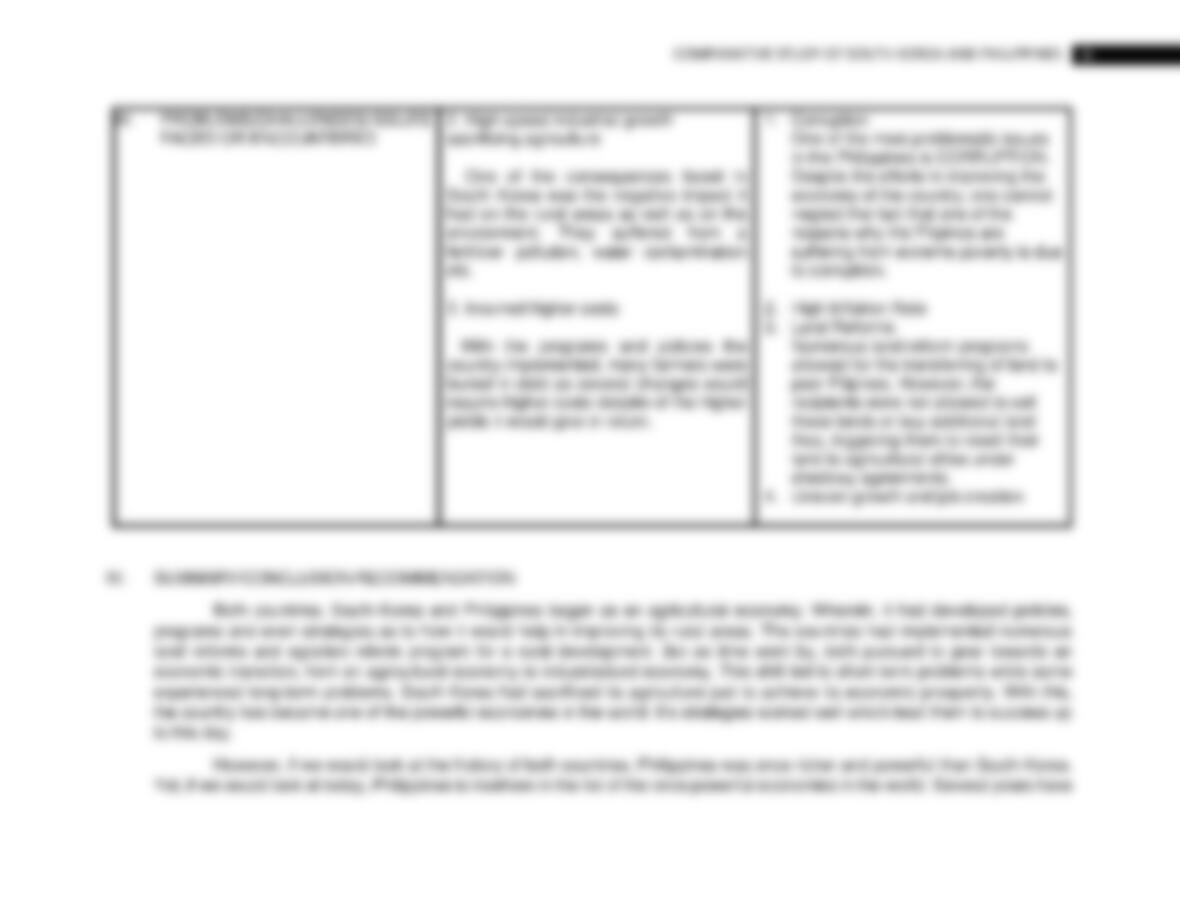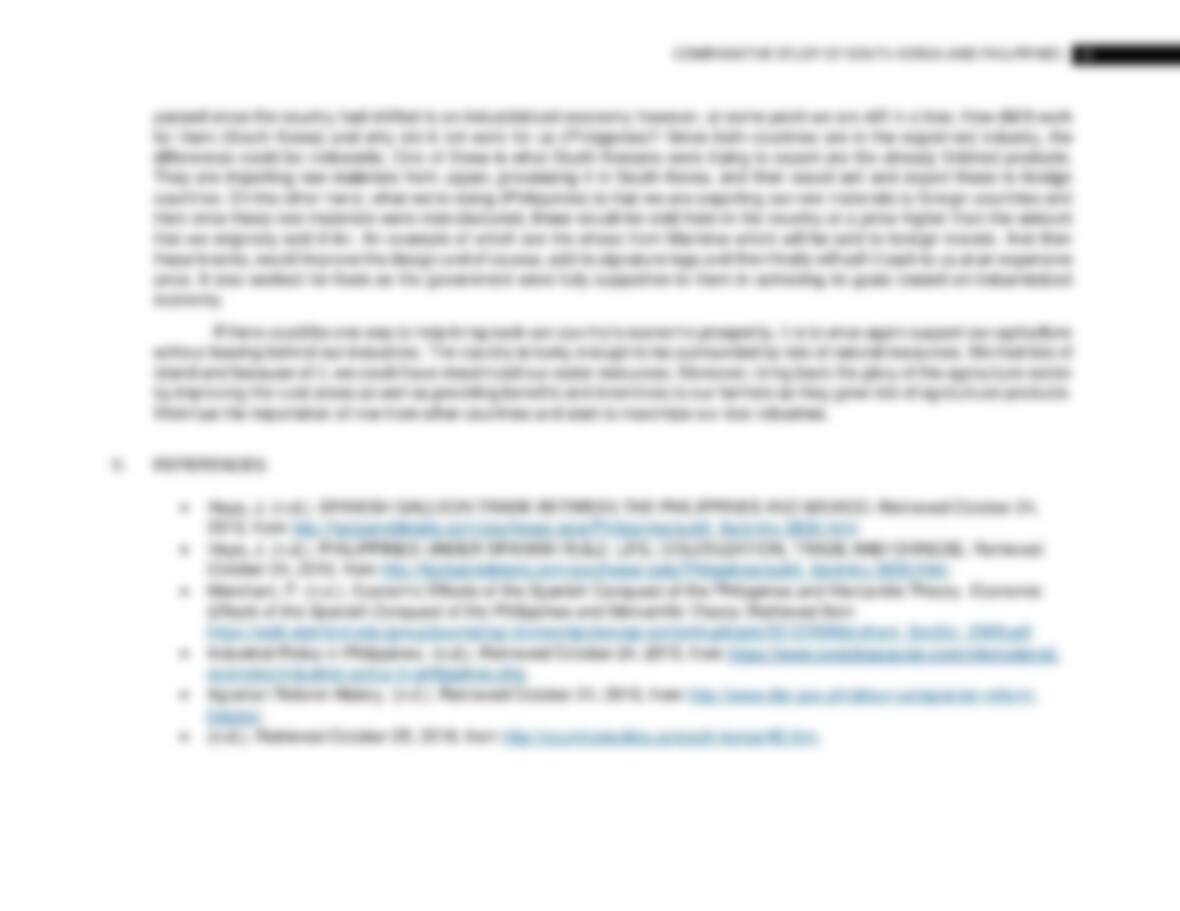COLONIAL HISTORY:
a. Japanese Colonization
Japan had built an extensive
infrastructure of ports, railroads,
roads, and buildings that would
facilitate the modernization of Korea’s
economy and Japan’s control on the
modernization process.
Most of the programs drafted in
Korea were from the policies that were
drafted in Japan during the Meiji
period.
As a matter of fact, the colonizers
had located numerous heavy
industries such as chemicals, steels,
and hydroelectric power across Korea.
COLONIAL HISTORY:
a. Spanish Colonization
Before, in the Pre-Hispanic
societies, there are indications that the
indigenous land-tenure arrangements
were characterized by communal
ownership of land. However, after the
arrival of the Spaniards here in the
Philippines, they introduced one of the
most significant changes to the
economy of the country and that is the
change in the land tenure system or
the private land tenure. Wherein they
introduced the idea that individuals,
could own a land and that land would
be considered as their source of
wealth. With this system, it did not only
changed the Filipino land relations but
also it allowed the private land
ownership by the Spaniards, thus
leading to agricultural enterprise.
Beginning 1571, the Spanish crown
was said to have made around 200
land grants which marked the start of
the colonial estates. Ranching and
Agriculture were the two main uses of
these landed estates. There had been
24 cattle ranches in Manila during
1606 but the number declined as early
as 1659 in favor of the agriculture
sector. “Most agricultural estates


